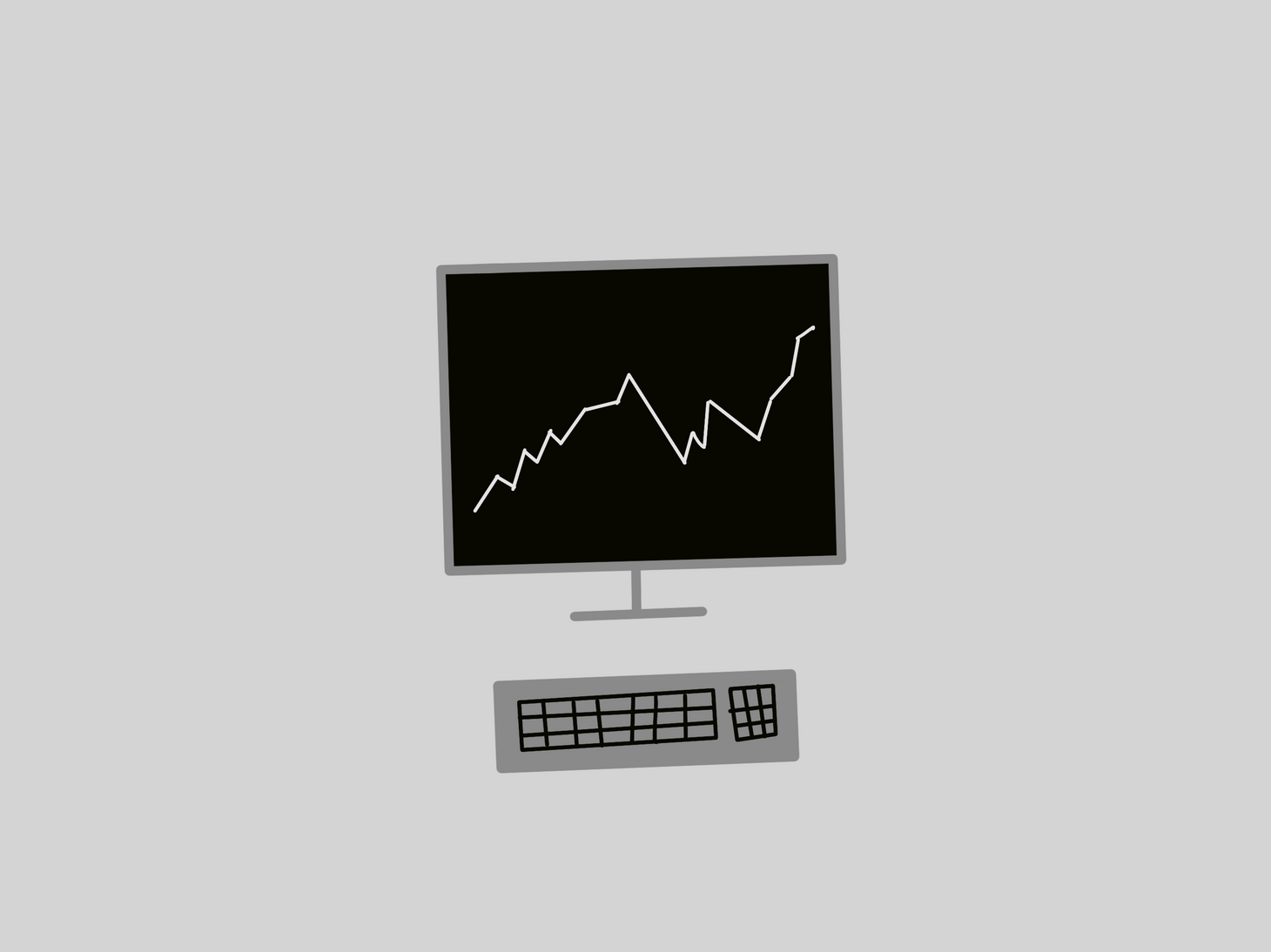A Primer On Derivatives
Financial weapons of mass destruction or handy tools in the hands of a skilled trader?

Table of Contents
Hey there!
In the past couple of weeks, I covered topics (future of technology 1 & 2) which were somewhat far from STEBI's core themes of economics, business strategy, and investing. Today's article brings the focus back, and dives into derivatives.
Often considered mysterious and complicated, derivatives get a bad rap. Warren Buffett once called them financial weapons of mass destruction. I disagree. Like every other tool, they can be helpful or harmful, it depends on the user.
This article is for traders and investors, students of this craft, and for the seeker of arbitrage. If you're one of them, read on!
Derivatives are contracts. Contracts about assets (like equity shares, commodities, currencies, etc.), such asset is called the underlying asset, or simply the underlying. As the price of the underlying fluctuates, the price of the derivative corresponds to it. Market participants trade these derivatives to gainfully benefit from price changes therein.
You must be thinking, why trade the derivative when you can trade the asset? More on this later.
The Indian stock markets mainly offer three types of derivatives - futures, call options, and put options; this segment is called the F&O segment (futures & options). As opposed to the cash market segment (for direct buying and selling of shares), the F&O segment consistently witnesses a much higher volume of transactions. For example, on the NSE today (on 15th December 2020), the number of F&O trades were ~700 times the cash market trades. This just goes to show that traders love derivatives.
By the time you're done with this article, you should be able to understand what you would be getting into if you choose to trade in them.
Futures
In a futures contract, on the day of entering into the contract, the buyer agrees to buy the underlying, and the seller agrees to sell the underlying, at a specific price at a predetermined future date. Let's take a real example:
The following table gives the closing price of TCS (the equity share) on the NSE on 15-Dec-2020, and the prices of its futures contracts. So, if one buys the TCS (future 25-Feb-2021), essentially, he agrees to buy TCS shares on 25th February 2021 at a price of ₹2,778.70 per share. And the seller on the other side of the trade agrees to sell the same at that price.
| Name | Price |
|---|---|
| TCS (Equity Share) | ₹2,763.95 |
| TCS (future 31-Dec-2020) | ₹2,800.75 |
| TCS (future 28-Jan-2021) | ₹2,805.30 |
| TCS (future 25-Feb-2021) | ₹2,778.70 |
Now, one could buy 300 shares of TCS today at 300 * ₹2,763.95 = ₹8,29,185; and immediately sell the 31st December futures contract at 300 * ₹2,800.75 = ₹8,40,225. Without considering exchange fee, brokerage etc., the trader would pocket a profit of:
⇒ (₹2,800.75 - ₹2,763.95) * 300 = ₹11,040
When the contract expiry date, i.e. 31st December 2020 comes, the trader would (under the futures contract) be obligated to sell 300 shares of TCS at ₹2800.75. Since he already owns them, his profit is safe.
There are two ways to settle a futures contract obligtion – either through delivery, (as explained above) where the futures contract seller offers the owned shares for sale. Or, by settling in cash. Settling in cash means that one enters a trade opposite to the one they have entered into earlier. So, if the futures contract had been sold, they buy it; and if it had been bought, they sell it. This closes the traders position in such a contract.
A few things to note -
- In context of the futures contract, the price of the underlying (here the price of TCS' equity share) is called the spot price.
- All derivative contracts are traded is lot sizes, predetermined by the exchanges. For TCS the lot size is 300 shares. This means that a trader wanting to trade a futures contract of TCS must trade the equivalent of 300 shares, or multiples thereof.
- For any underlying equity, at any given time, derivatives of only three time periods are be traded. They are called - this month, near month, and far month contracts respectively. At the end of the trading day on 31st December, the future contract will expire, and a new futures contract expiring on 25th March 2021 will be created, and will start trading on the trading day after the day of expiry.
- In India, all equity based futures and options contracts expire on the last Thursday of the calendar month (in case that day is a holiday, the immediately preceding trading day).
Options
Under an options contract, one party sells a privilege to another. The one who buys the privelege pays a fee to the seller, this fee is called 'option premium'. The seller of an option is called the option writer.
Two types of options are popular in the markets:
Call Option
A buyer of a call option has the right to buy the underlying on a particular date, at a particular price (called the strike price). The seller of the call option, in exchange for the premium received (on the date of entering into this contract) is obligated to sell the underlying to the call option holder, if the holder chooses to pay the agreed price on the predetermined date. Don't worry, an example is coming.
Put Option
A buyer of a put option has the right to sell the underlying on a particular date, at a particular price (called the strike price). The seller of the put option, in exchange for the premium received (on the date of entering into this contract) is obligated to buy the underlying from the put option holder, if the holder chooses to offer the underlying asset for sale on the predetermined date.
Example, the table below shows the call and put option premiums of TCS, of contracts expiring on 31-December-2020 (again, like futures contracts, only three time periods exist at a time, and the they expire on the last Thursday of every month. Also, for any underlying, the lot size of their futures and options is the same. So TCS' lot size is 300 even for options.):
| Strike Price | Call Premium | Put Premium |
|---|---|---|
| ₹2,600 | ₹181 | ₹11 |
| ₹2,700 | ₹105 | ₹29.75 |
| ₹2,800 | ₹54.50 | ₹79.35 |
| ₹2,900 | ₹23.40 | ₹144.40 |
The way one should interpret this is – while TCS equity shares can be bought for ₹2,763.95 per share, the data above tells us that, the right to buy TCS shares at a price of ₹2,600 a share is available for ₹181. So, if I spend ₹181 today, and then ₹2,600 on the 31st, my total outflow will be the sum of the two i.e. ₹2,781. If on that date, the share is trading at ₹3,000, I would've made a profit. Since, I would then sell the share at ₹3,000 and easily book a profit of ₹219 (₹3,000 - ₹2,781). And interpret the rest of the premiums similarly.
Now tell me, if you possess a right to buy (call option) TCS shares at a price of ₹2,900 on 31st December, but the shares are trading at ₹2,750 on that date, would you choose to exercise your option of buying at ₹2,900 per share?
No.
That's because, if you want to buy the shares, you might as well buy them for ₹2,750. Why pay 2,900?
In such an eventuality, the seller of the call option would forfeit the premium.
To reiterate, in an options contract, the buyer of the contract gets a right, and the seller of the contract accepts an obligation. So naturally, the one with the right would claim their right only if doing so is beneficial for them.
Margin, the reason for the lure
The main reason why traders love derivatives is that – in derivatives, as opposed to in the cash market, a trader can take more exposure on their money.
To explain, in the cash market to buy 300 shares of TCS for ₹2,763.95 per share, a trader would have to transfer ₹2,763.95 * 300 = ₹8,29,185 to their broker. And then gain or lose money based on changes in the price of the share. Say the share goes up to say ₹3,000, the profit would be 300 * (₹3,000 - ₹2,763.95) = ₹70,815. A return of ⇒ (₹70,815 / ₹8,29,185 * 100) = 8.54%.
But, in derivatives one does not have to pay the full amount to the broker. The exchange allows traders to submit 'good faith money' to the broker, this is called margin money. This is percentage of the total amount traded for. In the case of TCS, the margin money is ~21%. This means that to trade ₹100 worth of TCS in the F&O segment, one would just have to transfer ₹21 to their broker.
So, continuing on our example, if instead of purchasing 300 shares of TCS in the cash market, if one buys one lot of futures (expiring on 31-Dec-2020). ₹2,800.75 * 300 = ₹8,40,225, worth of trading would be done. And only 21% of this amount ~₹1,76,448 would be required by the broker. And if again the share rises to ₹3,000, the profit would be 300 * (₹3,000 - ₹2,800.75) = ₹59,775. The return on money used would be ⇒ (₹59,775 / ₹1,76,448) * 100= 33.88%
It should also be noted that in case the trade goes bad, one can lose far more than they would in a similar trade in the cash market.
Conclusion
Derivatives have their advantages for sure. They are excellent hedging instruments and present various arbitrage opportunities for vigilant traders. But, they can be extremely dangerous in the hands of unskilled traders. I can tell you this from experience, on one trading day I was looking at a loss equivalent to all my earnings of the proceeding three months! The heart pounding and the guilt of that experience taught me a valuable lesson – in the long term, the markets reward discipline, not mindless risk taking.
If one takes the time to learn the basics of investing and/or trading, and then practices them diligently, the markets can be very rewarding.
If you've reached till here, you're genuinely interested in learning more about trading and investing. I strongly recommend you take the time to educate yourself and tread this path with guidance and caution.
Until next week.✌🏼
Stebi Newsletter
Join the newsletter to receive the latest updates in your inbox.

